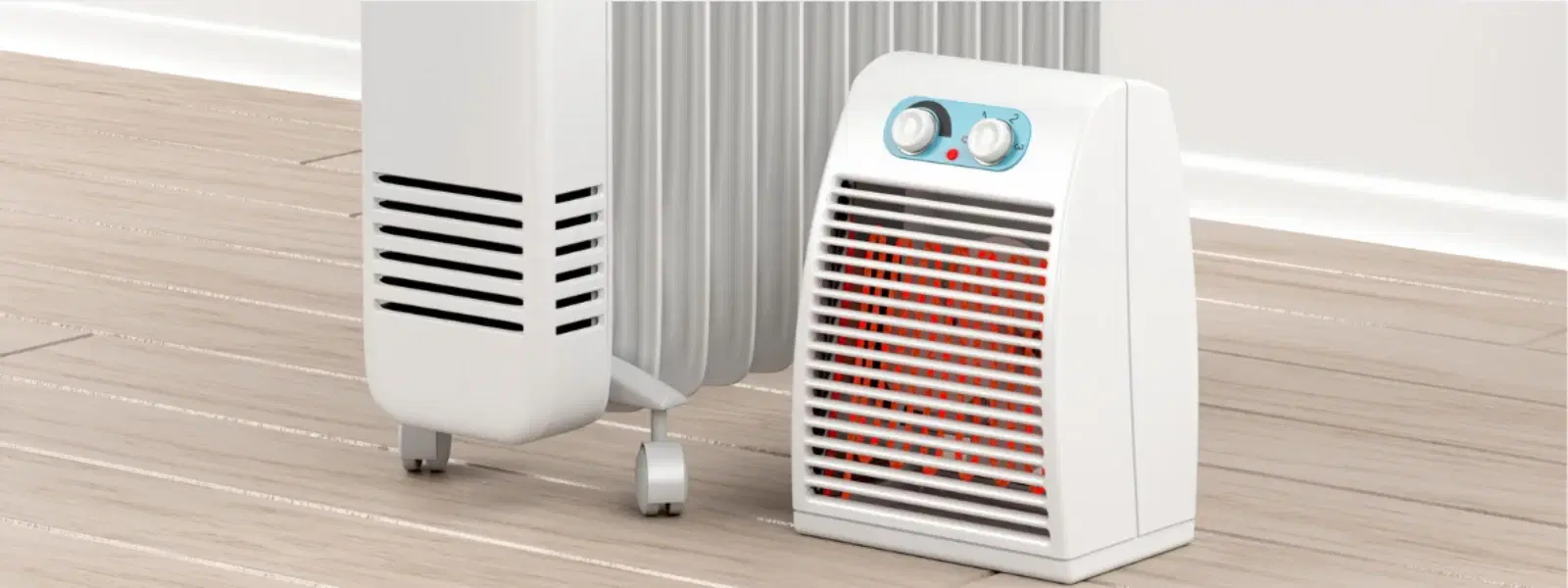
Home Appliances
•03 min read
Imagine stepping into a chilly room and switching on your heater. Within moments, warmth envelops you. But have you ever wondered what happens when current is switched on in a room heater? This guide will take you through the science behind room heaters, explaining how room heaters work, the role of electric current in heaters, and the energy usage involved in the electric heating process. By the end, you will have a clear checklist of the events that occur during electric heater operation.
A room heater is a device designed to warm up indoor spaces. It uses electric current as an energy source, which plays a key role in turning electrical energy into warmth. The simple design makes it a valuable appliance, especially in cooler seasons.
Electric current in heaters flows through various components, especially the heating elements. The function of current in heaters is to generate heat by creating resistance within the heating element. This process is fundamental to the working principle of room heaters and is responsible for the room heater heating mechanism.
Heating elements in room heaters are the parts that actually create heat. Often made from materials like nichrome, these components are chosen for their ability to withstand high temperatures and convert energy effectively. The heating elements in room heaters play a crucial role in the electric heating process.
When current is switched on in a room heater, the electric heater operation begins. The current flows through the heating element and meets resistance. This resistance causes the element to increase in temperature, usually becoming red hot. The red-hot glow indicates that the resistance has successfully converted electrical energy into heat energy.
Insight Corner: The Science Behind Red-Hot Heating Elements
When current flows through a room heater's element, its resistance converts electrical energy into heat. This heating effect causes the element to reach temperatures high enough to emit a red glow, a phenomenon known as incandescence.
• Current flows through the heater from the power source.
• The heating element resists the flow of current, which begins the process of heat generation.
• Heat generated is then transferred to the surrounding air, gradually warming the room.
The heating element undergoes visible changes as it heats up. Initially, it functions normally, but soon it reaches high temperatures and can appear red hot. To ensure safe operation, many heaters include built-in safety mechanisms that prevent overheating. These measures underline the reliability of the working principle of room heaters and help in managing room heater power consumption efficiently.
Room heater energy usage is directly linked to the wattage and duration of operation. A higher wattage means more energy is consumed to deliver the desired warmth, which accompanies the electric heater operation. Customers who shop smartly on platforms like Tata Neu benefit from the assurance of efficiency and trusted after-sales support through services like Express Delivery and expert guidance.
Here are some tips to reduce energy consumption while enjoying the comforts of your heater:
• Use the heater only when necessary and avoid prolonged use.
• Ensure proper maintenance of the appliance to keep the heating elements functioning optimally.
• Opt for models that offer energy-efficient features and listen to expert guidance from trusted platforms.
Modern room heaters are equipped with fuses and thermostats. These devices help control the temperature and prevent overheating, ensuring that the electric heating process remains safe. It is important to use certified heaters and adhere to guidelines provided by trusted platforms to avoid hazards.
Keep these precautions in mind while operating your heater:
• Avoid placing flammable items near the heater.
• Regularly check that the heater is operating within safe temperature ranges.
• Ensure proper placement in the room to maintain optimal air flow around the device.
It flows through the heating element, generating heat due to resistance.
Electric current generates heat when it passes through a resistive material in the heating element.
The heating element resists the current, converting electrical energy into heat and warming the room.
The resistance of the heating element causes it to become hot and emit a red glow.
Energy consumption is based on the heater's wattage and the duration it remains active.
Room heaters are a marvel of modern technology, converting electrical energy into heat through the practical use of electric current. From the moment the current is switched on, the heating elements begin their transformation into a warm, welcoming glow that steadily increases the room's temperature. By understanding the checklist of processes involved, such as the electric heating process and the role of resistance in creating heat, you can make informed decisions about energy usage and safe operation. Enjoy the peace of mind that comes with intelligent, efficient appliances and the added benefits of NeuCoins rewards when you shop smartly on Tata Neu.